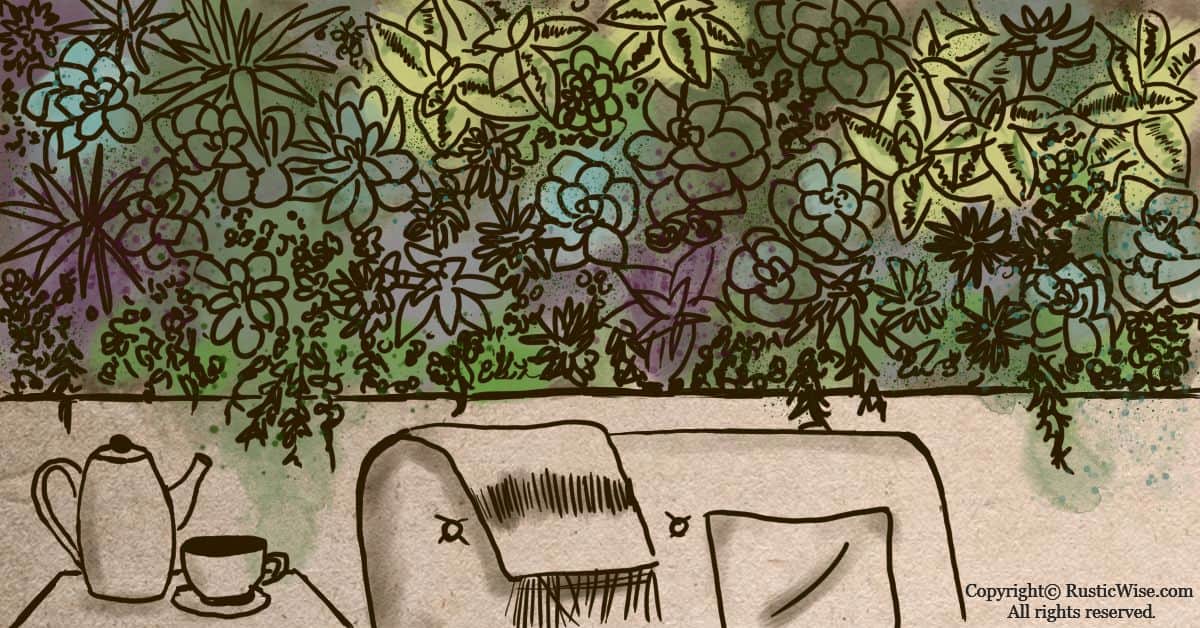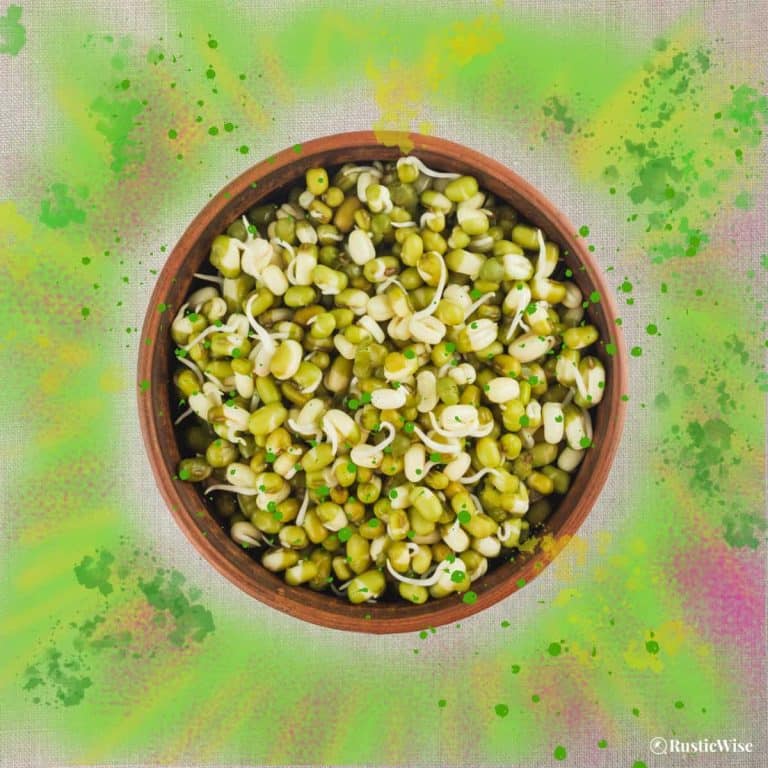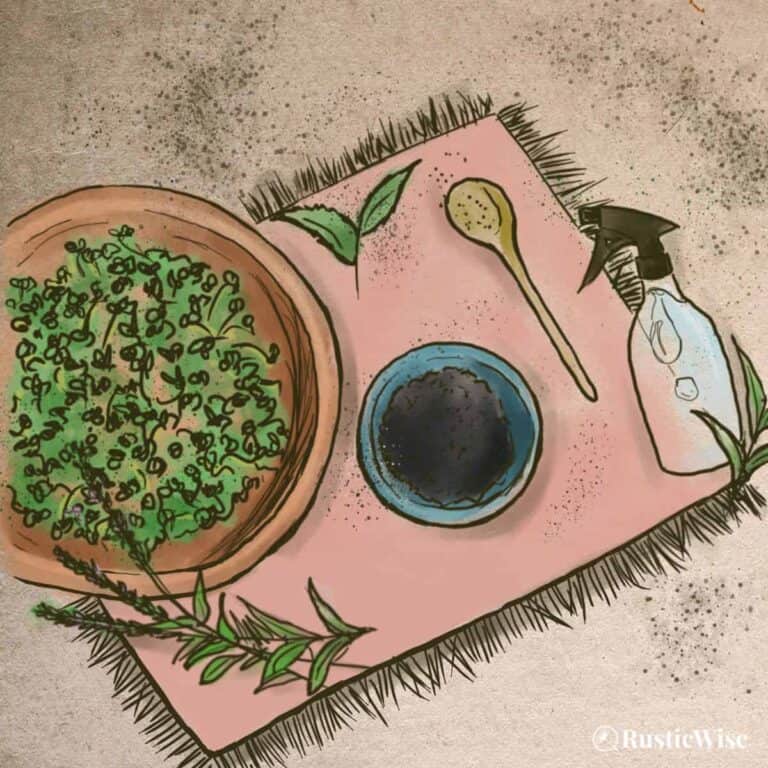12 Best Plants for a Living Wall
Green walls, vertical gardens, or living walls—all use natural plants to beautify a space, indoors, or out. Like all successful gardening, it comes down to proper planning. Selecting the best plants for a living wall within the lighting and growing conditions of your chosen space is one of the most important steps.
We’ve rounded up a list of the best indoor plants, plus herbs or plants suitable for outdoor growing too.
The term “living wall” encompasses a wide range of vertical greenery. It can refer to a full-scale lush green wall from floor to ceiling. Or, square wooden frames containing a few select plants. It can also be as simple as mounting a few planters or jars vertically and filling with plants or edibles.
We’ll also show you how to make a simple DIY mason jar wall planter down below.
Benefits of living walls
Why make a living wall? Adding more green to a space is always a good thing in our opinion! Here are a few benefits of having your own green wall:
- Improves air quality: There’s a much-referenced NASA study on the cleansing powers of houseplants on indoor air quality. If you’re looking to clean up your indoor air, a few good houseplants include spider plants, Boston (sword) ferns, rubber trees, and bamboo palms.
- Reduces stress: There’s a reason why gardening, or simply being a plant parent is so popular these days. It’s therapeutic and good for the soul. A study from the Journal of Physiological Anthropology examined the heart rates and blood pressure of participants who were asked to either repot a plant, or do a small task on the computer. Those who repotted the plant had reported lower levels of stress.
- May absorb sound: If you have a large-scale living wall, the greenery helps to dampen ambient sounds.
- Highlights or conceals architectural elements: Want to create a feature wall? Use plants to beautify your space. On the flip side, if you have an unsightly wall, or things you’d like to conceal, plant foliage is a great way to cover things up.
- Takes up less space: If you’re short on room, vertical gardens are a great way to maximize every square inch of growing space.

Types of green walls
When it comes to green walls, you need only to scroll through Pinterest to discover there are TONS of options. You can choose to go the DIY-approach and fasten a living wall from upcycled bottles, planters, and jars. You could build your own wooden frame to store a few plants. Or you could buy one of the many commercially-available living wall systems.
- Commercial panel or living wall systems: Large panels of vertical plants require an initial investment and setup. The larger the panel, the heavier it is, so it’s important to know that your wall meets proper strength requirements. You’ll also need to protect the wall with some sort of waterproof layer. Most large panels use a hydroponic setup such as a drip irrigation system.
- Wooden frame system: You can buy or build your own wall-mounted frame in any size you wish. Similar to a large wall panel, these plants stay within the frame as a unit. Think of it as nature-in-a-frame.
- Vertical plant containers: This type of vertical garden uses a frame and allows you to remove individual sections or pots in and out as needed. This allows you to easily change up plants as needed, and water them. You can DIY this, or buy ready-to-use ones like the systems from WallyGro.
- Trellises and wall support systems: If you’re planning on having climbers or vines, using a trellis (or something similar) is an easy way to build a living wall. Typically these climbing walls are outdoors, but you can replicate this indoors as well.
Things to consider when selecting the best plants for a living wall
Living wall plant selection is one of the most important, if not THE most important aspect in building a successful garden. Since you know your own space the best, pick plants that work well within your existing lighting and climate conditions. Work with what you got!
Because we all know that no matter how much TLC we give to a strawberry plant, for example, it’s never going to grow big and strong without plenty of sun.
Here are a few things to keep in mind when selecting the best plants for your vertical garden.
- Lighting: The light requirements of each plant is one of the main factors to consider. Once you’ve selected a designated spot for your vertical garden, keep track of the lighting conditions throughout the day, and how much sun actually reaches the wall. If you have a south-facing window, for example, select several plants that like bright-light.
- Shallow roots: Avoid selecting plants which require deep soil, and stick with ones with shallow roots.
- Disease-resistant and hardy: The last thing you want for your green wall is for it to look dead and brown. Select plants that are fairly low-maintenance, disease-resistant, and all-around resilient.
- Perennials vs. annuals: If you don’t mind changing up your wall once in a while, or if you’re okay with periods of no greenery, you could go with annuals. If you want longer-lasting plants, stick with perennials. You could add interest to your wall by interspersing a few flowering annuals amongst perennials.
- Growth, color, and texture: Remember the big picture when selecting plants and how they’ll all look together. The best way to do this is to sketch it out! Consider each plant’s size and direction of growth. For example, some plants will grow downwards and partially shade the plants below it. Others grow upwards.
Tip: Think as an artist (and gardener) and pick plants that not only grow well together, but also have interesting textures and colors that are harmonious. While ornamental plants are great, don’t forget about other edibles you could include if you have a sunny spot such as herbs, tomatoes, peppers, and other vegetables.
Inside or out?
Depending on your space and climate, you could decide to have an indoor living wall, or take it outside. With indoor green walls, your plants are living in a temperature-controlled environment. Even during the winter months, you could enjoy a tropical living wall.
With outdoor vertical gardens, you are more limited to selecting plants that suit your local climate. Outdoor living walls have the benefit of adding privacy to your backyard.
Best plants for a living wall
So here’s a roundup of 12 best plants for a living wall. We’ve grouped them by light requirements. They’re listed in no particular order.
Best plants for low light

Credit: Kelsey Brown / Unsplash
#1: Pothos
There are many cultivars of pothos but the golden pothos is especially low-maintenance. If you’re looking for a plant that vines, pothos has your back. We have several pothos in our house and they’ve made a lovely trailing veil around our stairway railings. Pothos is also great at purifying your indoor air.
Requirements: Avoid direct sunlight. Keep soil moist. Pothos enjoys low-mid humidity and warm temperatures.
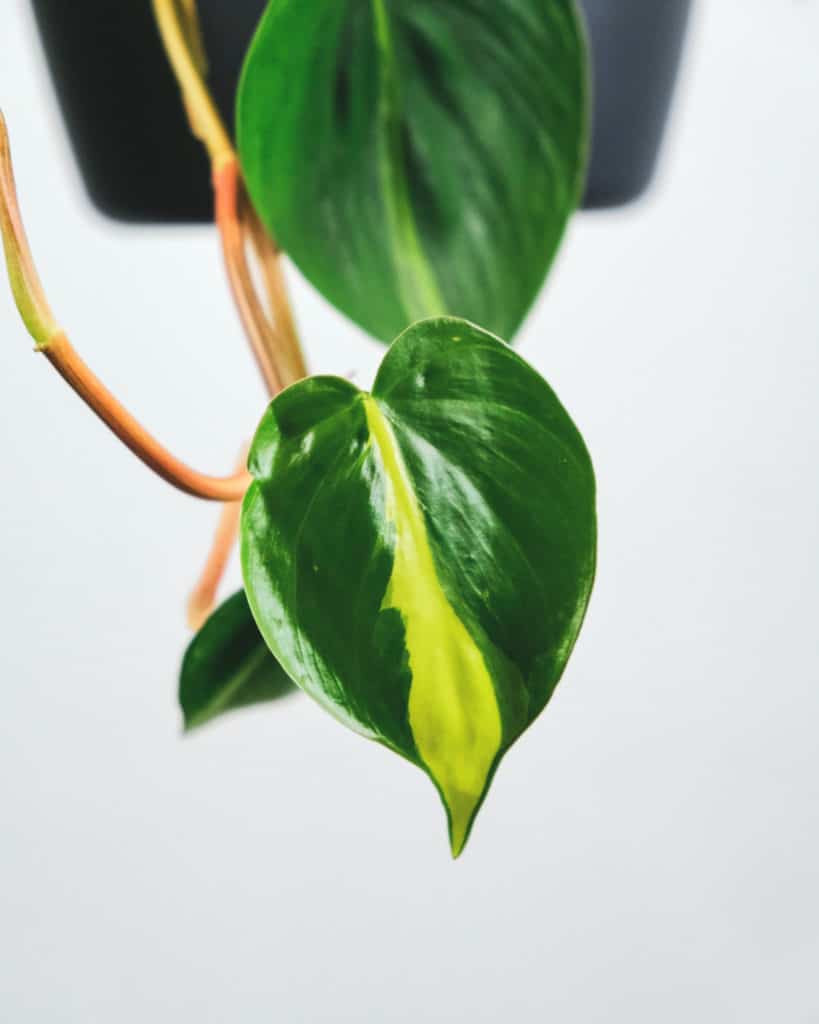
Credit: Severin Candrian / Unsplash
#2: Philodendrons (Brazil)
Even with plenty of neglect, the philodendron still holds up. Characterized by its heart-shaped leaves with a slight yellow or light-green variegation, this is another vining and quick-growing plant.
Requirements: Avoid direct-light. Keep your philodendron well-watered. This plant does well in normal household humidity and likes warmer temperatures (keep away from drafts).

Credit: Jungle Space / Unsplash
#3: Peace lily (Spathiphyllum)
Looking to spruce up your living wall with a touch of color? Peace lilies have white “flowers” that aren’t actually flowers, but a white leaf bract. Peace lilies placed in low light will have leaf bracts that are more light-green, while plants placed in sunnier locations develop white bracts. Avoid overwatering.
Requirements: Likes medium to low-light. Peace lilies are drought-resistant so avoid too much water. Enjoys high humidity, and warmer temperatures.
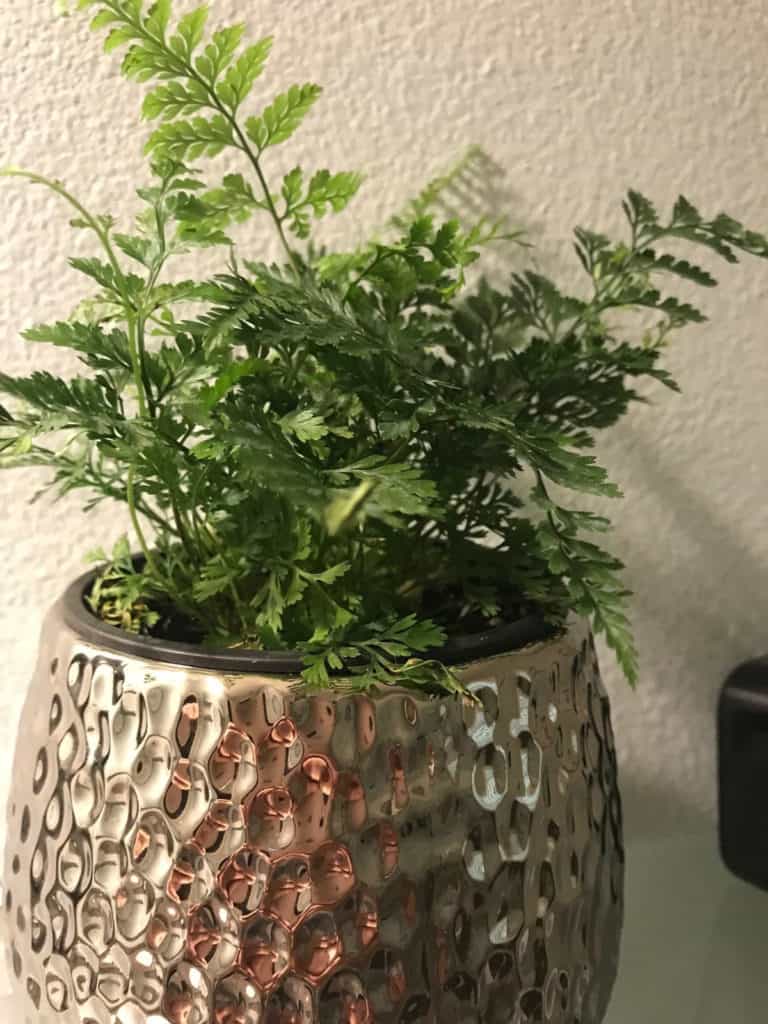
Credit: Sherri Barras / Flickr
Best plants for medium-light
#4: Rabbit foot fern (Davallia fejeensis)
This adorable fern gets its namesake from the furry-looking rhizomes that sprout above the soil. These rhizomes grow and trail with time. Unlike other ferns, the rabbit foot fern has lighter, thinner foliage.
Requirements: Keep in bright but indirect light. Mist gently to keep rhizomes moist. Likes room temperature.
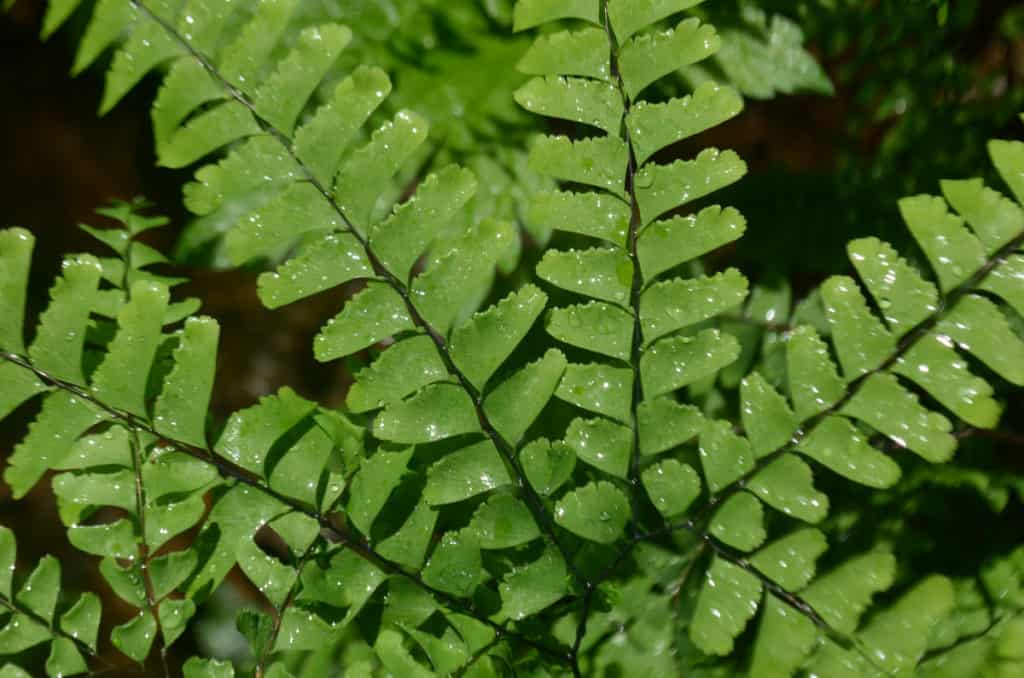
Credit: Joshua Mayer / Flickr, Maidenhair Fern (Adiantum spp.)
#5: Maidenhair fern (Adiantum spp.)
The maidenhair fern makes an interesting addition to a living wall with its feathery, full foliage. Native to North American woods, the maidenhair produces an oil which is extracted for use in haircare products. This forest floor-dwelling plant doesn’t like bright light.
Requirements: Keep in indirect, bright light when kept indoors (avoid south-facing windows). When kept outside, it likes partial shade. Needs humid conditions and well-draining soil. Trim fronds every once in a while to keep tidy.
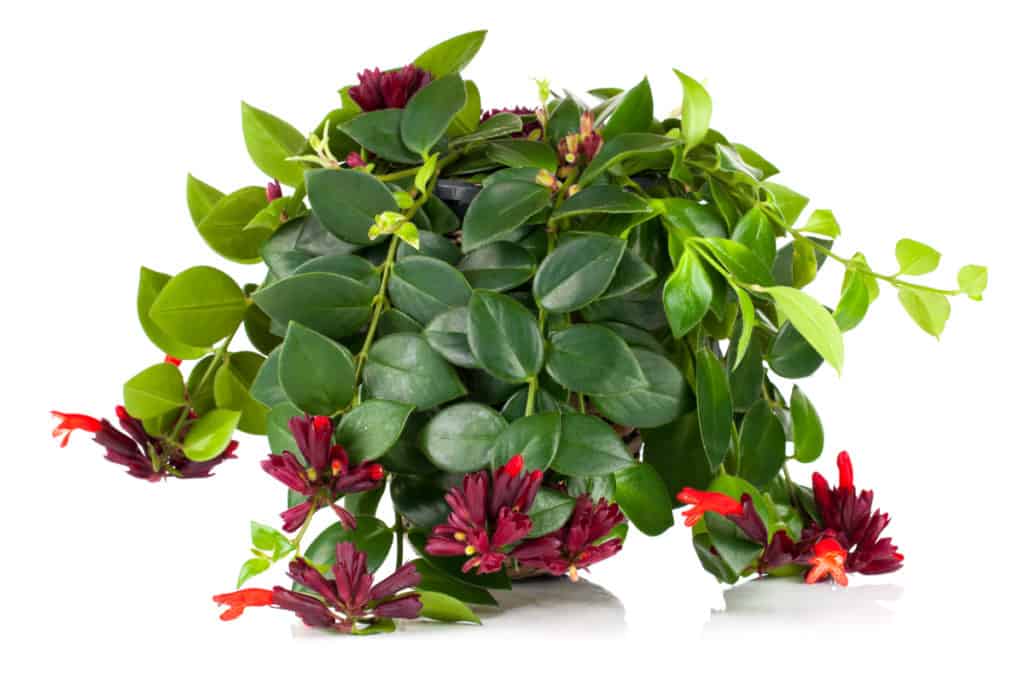
Credit: Yay Images
#6: Lipstick plant (Aeschynanthus radicans)
With its shiny, cascading leaves and bright-red blooms, the lipstick plant is an attractive addition to any living wall. It’s fairly low-maintenance and can handle lower-light and dry soil.
Requirements: Prefers bright, indirect light for part of the day to bloom. Likes room temperature. Avoid overwatering.
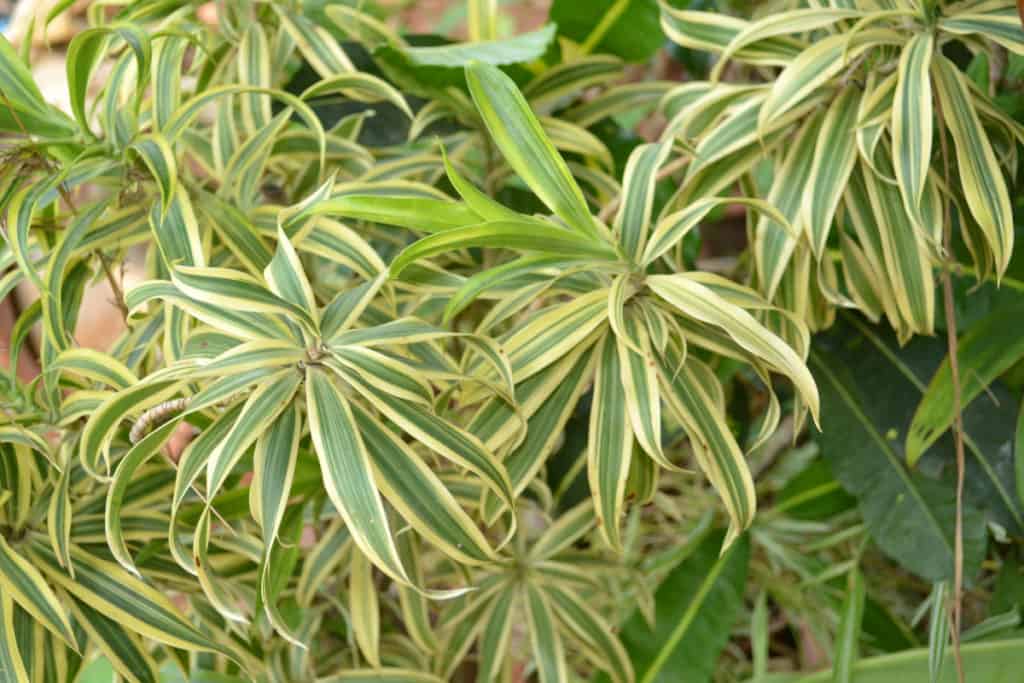
Credit: Ventilago / Flickr
#7: Song of India (Dracaena reflexa)
Both beautiful and easy to care for, this plant does well on green walls. With its brightly colored green and yellow leaves, Song of India can tolerate a range of low-light and dry conditions.
Requirements: Likes bright, indirect light, but can tolerate lower-light. Allow soil to dry between waterings and avoid overwatering which leads to root rot. Enjoys average humidity, likes misting and warmer temperatures.
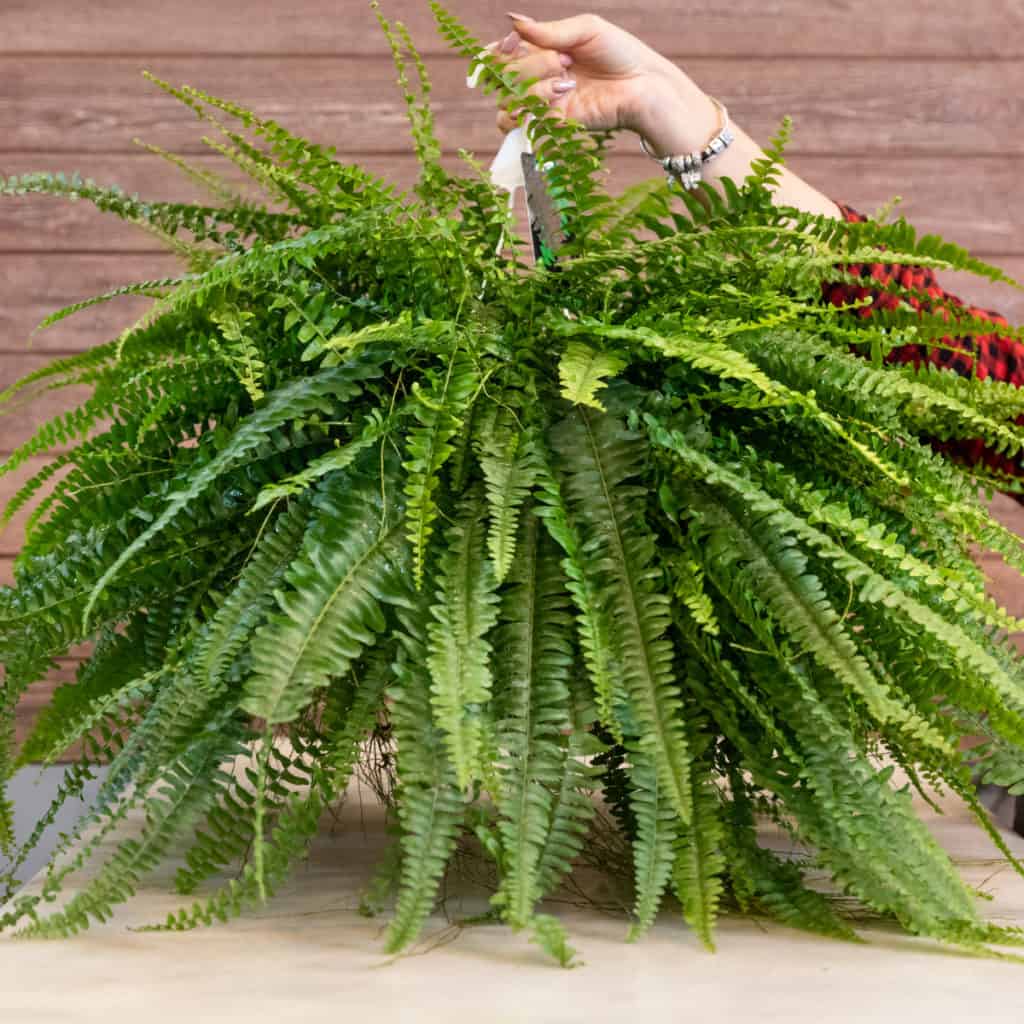
Credit: Yay Images
#8: Sword Fern (Nephrolepis exaltata)
Also known as the Boston fern, the Sword fern is fairly low-maintenance, but does enjoy it’s fair share of moisture. These ferns add a vibrant, splash of bright-green to any living wall.
Requirements: Try planting this fern strategically where it can stay moist. This fern does well in indirect bright sunlight for around 2 hours each day (keep away from bright, unfiltered light).

Credit: Cayce Wegman / Unsplash
#9: Succulents
Of course we had to include succulents to this list! Hardy and low-maintenance, succulents add lovely geometric designs to any living wall. Here are a few good varieties:
- Echeveria: Your classic looking succulent with spiky flowers in summertime.
- Sempervivum: Hardy and fits well between cracks and crevices.
- Crassula: There are hundreds of types of Crassula succulents, with the most popular being the jade plant (Crassula ovata obliqua). The Crassula arborescens is a good pick for a living wall.
- Sedum: Provides a lush ground or wall-covering. Sedums have shallow roots and are resistant to drought.
Requirements: Water when soil is dry and avoid overwatering. Likes bright, indirect light and well-draining soil.

Credit: Yay Images
#10: English ivy (Hedera helix)
This one’s a climber! The English ivy is often seen covering exterior brick walls, but it’s also a great plant for indoors. If you want to quickly cover a wall, this plant’s for you. If growing indoors, try keeping in a north or east-facing window for steady indirect lighting.
Requirements: Bright, indirect lighting. Water once soil is mostly dry. Avoid overwatering to prevent root rot. New or younger plants require more water.
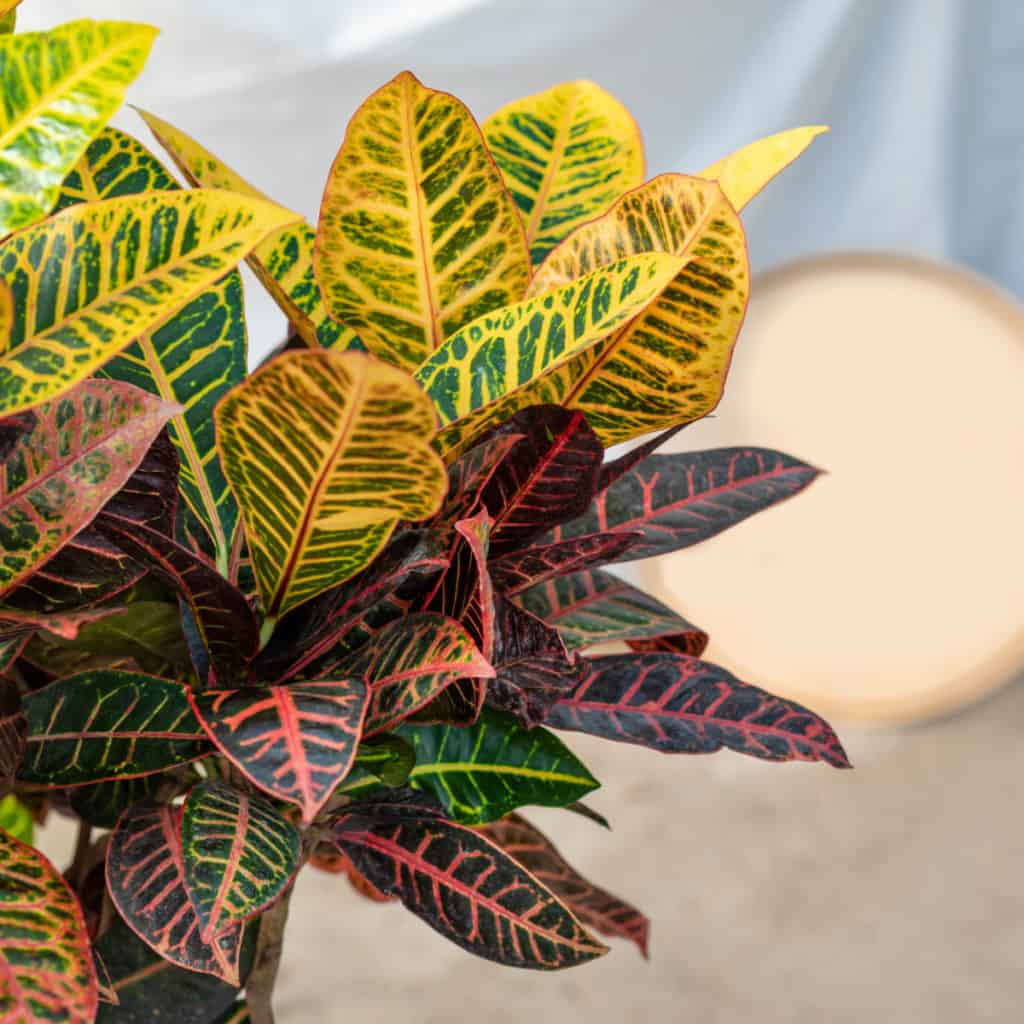
Credit: Yay Images
Best plants for bright-light
#11: Croton (Codiaeum variegatum)
Add a splash of color to your living wall with this cute and colorful plant. Its characteristic leaves feature shades of orange, red, and yellow. Crotons that don’t receive enough light can’t produce the brightly-colored leaves, which is a shame.
Requirements: Moderate watering. Provide plenty of humidity, and several hours of bright light each day.
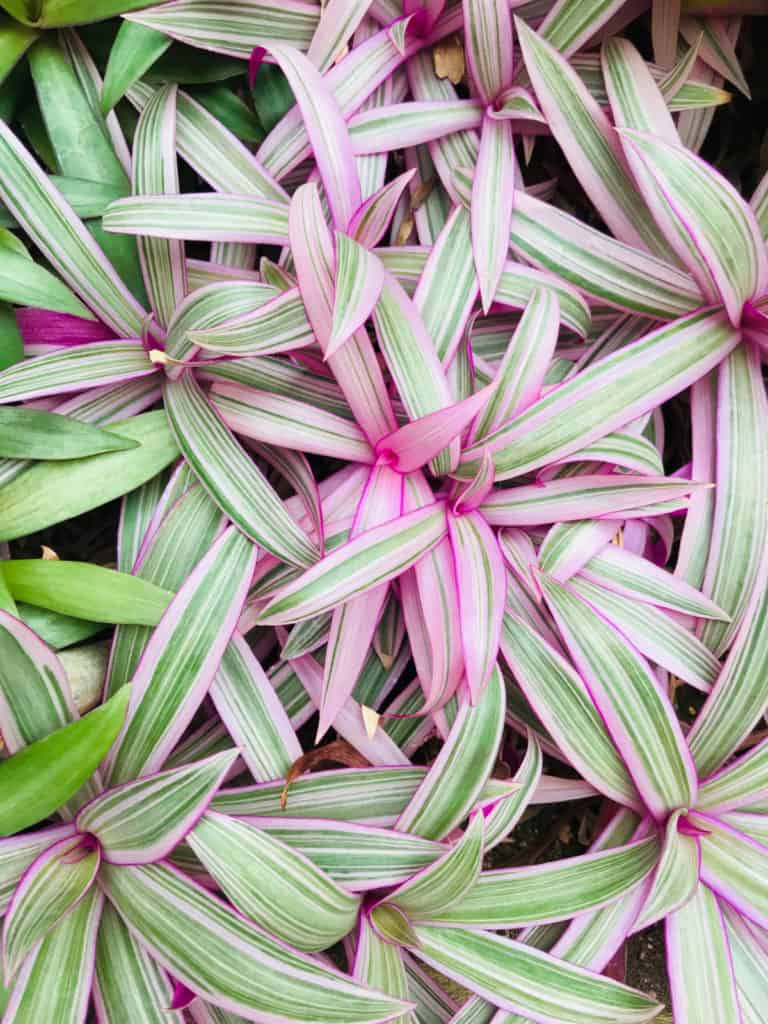
Credit: VKW Photography / Unsplash
#12: Boat lily (Tradescantia spathacea)
With waxy leaves characterized by purple undersides, the boat lily (aka moses-in-a-cradle) has a distinct purple and white flower. This tropical plant likes lots of light and works well indoors, and outdoors in the summer. This plant is poisonous. If growing outdoors, make sure to contain it. The boat lily quickly spreads and is classified as an invasive species in some areas.
Requirements: Full, direct sunlight with well-draining soil. Allow top inch or two to dry between waterings.
Tip: If you’re experiencing trouble with your indoor living wall, or just want to fill in some bare patches, consider using preserved moss. While artificial moss is completely manufactured, preserved moss is based on the real thing (think of preserved flowers). So they look and feel real, minus any of the maintenance.
Best edibles for a living wall
For a tasty living wall, consider planting edibles. Edibles do well in a bright, sunny spot. Here’s a roundup of edible plants that do well on living walls.
- Tomatoes
- Peppers
- Lettuce and leafy greens (spinach, kale, chard)
- Peas
- Radishes
- Herbs
- Strawberries
How to make mason jar wall planters
Are you itching to get started with your own living wall? One of the easiest and cheapest ways to make a vertical garden is with a few wide-mouth mason jars, and a scrap of wood.
Plant herbs for an edible garden just a stone’s throw from your kitchen.

Supplies you’ll need:
- Scrap lumber
- Wide-mouth mason jars, at least 1 pint (16 ounces), or larger
- Screws and screwdriver
- Hose clamps (one for each mason jar)
- Drill
- D-rings to secure to wall
- Small pebbles
- Potting soil
- Herbs
- Optional: paint or stain for the wood, spray paint for the clamps
- Paint or stain the wood as desired. Or, for a really rustic look, leave as-is! Optional: If you want to spray paint the clamps, now is the time to do so. Allow to dry.
- Decide on the orientation of the wood (vertical or horizontal). Attach the D-rings in place on the back of the wood.
- Measure out the spacing of the jars with a pencil. Drill a hole into each clamp. Use a drill to attach clamp to the wood with screws.
- Now it’s time to prepare the mason jars! Fill each jar with a layer of pebbles for drainage, about 2 inches (5 centimeters) or so. Fill with potting soil. Plant your herbs.
- Attach each mason jar to the wood piece by closing each clamp until it’s snug.
Ta-dah! You’ve made your own vertical garden!
Common FAQs
Can you grow carrots in a vertical garden?
That depends on your vertical garden’s configuration. When growing carrots, it’s important to give them plenty of room (vertically) to grow. So if you have a vertical garden that accommodates for the deep roots of carrots, you could be fine. Ideally, carrots would have at least 12 inches (30 centimeters) of vertical space.
Otherwise, stick with more shallow-rooted veggies like kale, spinach, chard, beans, or tomatoes.
How long do living walls last?
This really depends on a number of factors. Factors include: the type of plants you selected, how well-suited the plants are to the light/soil/water conditions, the type of care you’ve given to the plants, and the structure of your living wall.
Perennials will give you longer year-round greenery over annuals. Succulents are known to be particularly long-lasting when planted in the right conditions.
With the right care and conditions, a living wall should brighten up your walls for years.

Author: Josh Tesolin
Josh is co-founder of RusticWise. When he’s not tinkering in the garden, or fixing something around the house, you can find him working on a vast array of random side projects.

